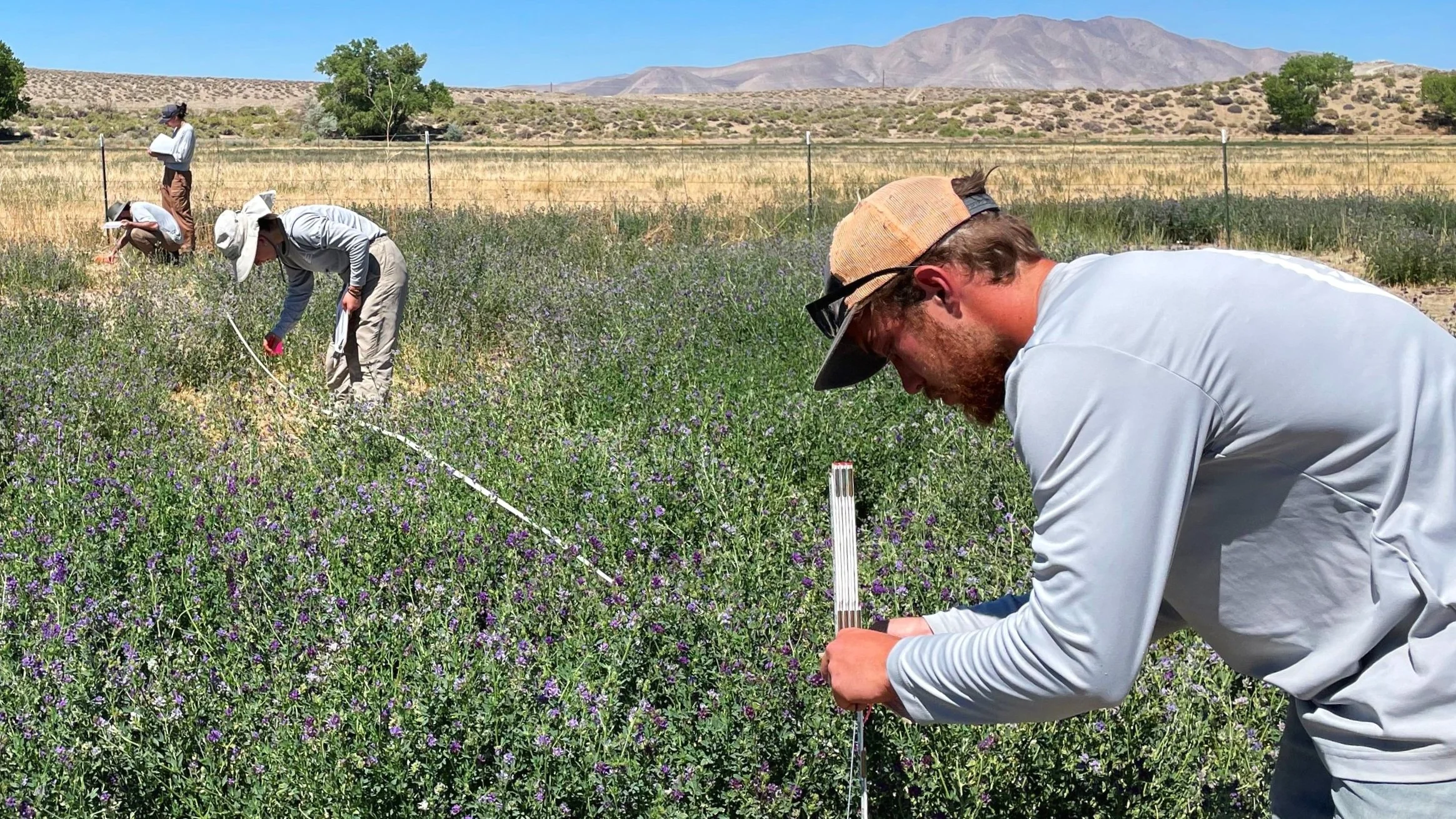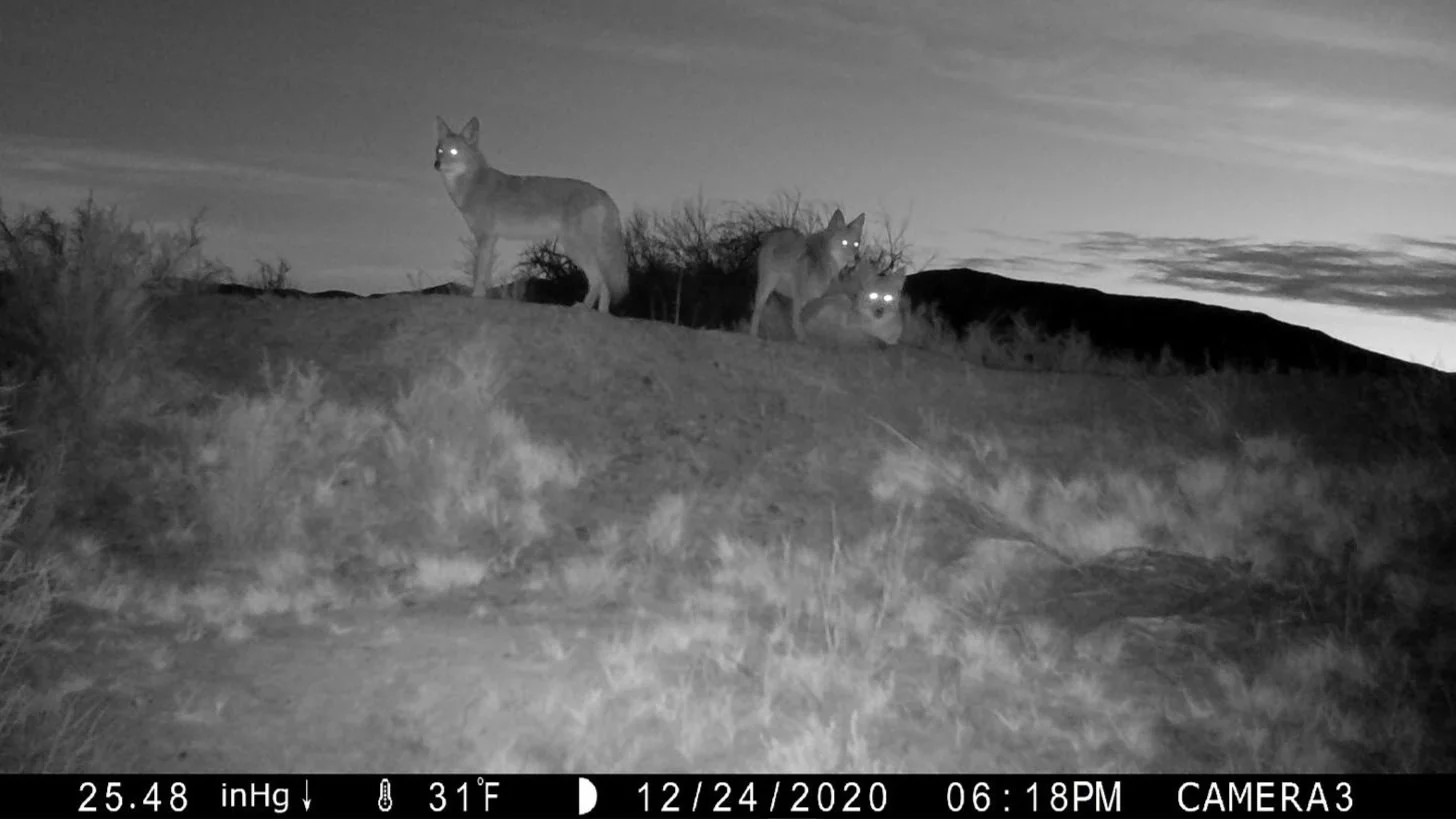Science and a Sense of Place
As conservation scientists, we recognize the fundamental connection between ecological and human systems and use natural and social sciences to work on conservation solutions that maximize the preservation of biodiversity while also improving human well-being.
Science in Action
Enhancing our understanding of the natural and cultural resources of the Walker Basin
Improving our operations through adaptive management
Evaluating success of our stewardship activities
Supporting innovative applied conservation research
“Native plants grow and propagate slowly in this harsh and arid environment…we will be monitoring the restoration process for at least twenty to thirty years to get a full picture of how successful it is.”
Guiding Our Work
With a rigorous understanding of the condition of natural resources and the most effective stewardship methods, we develop management strategies that balance environmental, agricultural, and recreational interests. The Walker Basin Conservancy collects data on plants, wildlife, soils, and streams. We use this information to improve habitat, guide land management decisions, evaluate the long-term success of our stewardship efforts, and refine our native seed production methods.
Long term monitoring
Learn More
To evaluate our stewardship efforts, we collect data on characteristics of vegetation, soil, and wildlife in established long-term plots in retired agricultural fields we are restoring with native plants. We also monitor nearby reference areas that do not have a history of agriculture and serve as benchmark for the conditions we would like to see in the long run in our restoration areas. We use the Assessment, Inventory, Monitoring (AIM) methods developed by the Bureau of Land Management, which measure wildlife habitat quality, how susceptible the area is to erosion, and resiliency of the ecosystem.
streams and wetlands
Learn More
Across the globe and particularly in the arid climates like the western United States, streams, wetlands, and the resulting riparian habitat are important for both people and nature. They mitigate flooding, filter pollution, recharge groundwater, and Across the globe and particularly in the arid climates like the western United States, streams, wetlands, and the resulting riparian habitat are important for both people and nature. They mitigate flooding, filter pollution, recharge groundwater, and deliver water for agriculture while also being biodiversity hotspots which support an array of plants and animals. A variety of challenges, however, have contributed to the loss of over 90% of historic riparian habitat in many western states.
Because of this importance and scarcity, the preservation and balanced management of streams and wetlands have become a resource management priority.
The water that WBC moves instream to restore Walker Lake will also improve stream and riparian conditions. In addition, WBC works on projects like adding fencing to limit livestock access to riparian areas and planting native riparian vegetation. The Conservation Science team monitors stream and riparian habitat to evaluate how Conservancy actions influence habitat in and along the Walker River. We measure several water quality metrics, riparian vegetation characteristics, and aspects of stream morphology.
Wildlife
Learn More
While rare species are a priority, we care about all wildlife and try to gain information about when and where different species are active to help guide management decision and inform directions for future projects. We track wildlife sightings in the field using wildlife cameras and through observations recorded by staff and AmeriCorps members.
Rare species
Learn More
The Walker Basin is home to several federally protected species, including Lahontan cutthroat trout, western yellow-billed cuckoos, and monarch butterflies. The Walker Basin Conservancy is contributing to the recovery of these species through our restoration and monitoring efforts. The long-term goal for Walker Lake is to restore conditions needed to support a Lahontan cutthroat trout fishery once again, which would be a major step toward the recovery of the species. We also help with western yellow-billed cuckoo surveys on the Walker River to gain a better understanding of how commonly they are in the area and what type of habitat they prefer.
Monarch butterflies have experienced catastrophic declines in population sizes over the last few decades due to a variety of threats including habitat loss, insecticide and herbicide use, disease and parasites, and climate change. Excitingly, areas in the Walker Basin have strikingly high monarch abundance and we contribute their recovery efforts by monitoring monarch activity and adjusting our land management practices to maintain and improve monarch habitat.
We contribute to monarch citizen science efforts by submitting all our data on milkweed and monarch observations to the Western Monarch Milkweed Mapper and all of our adult tagging data to the Southwest Monarch Study. For more information about monarch conservation and how you can get involved visit the Monarch Joint Venture page.





